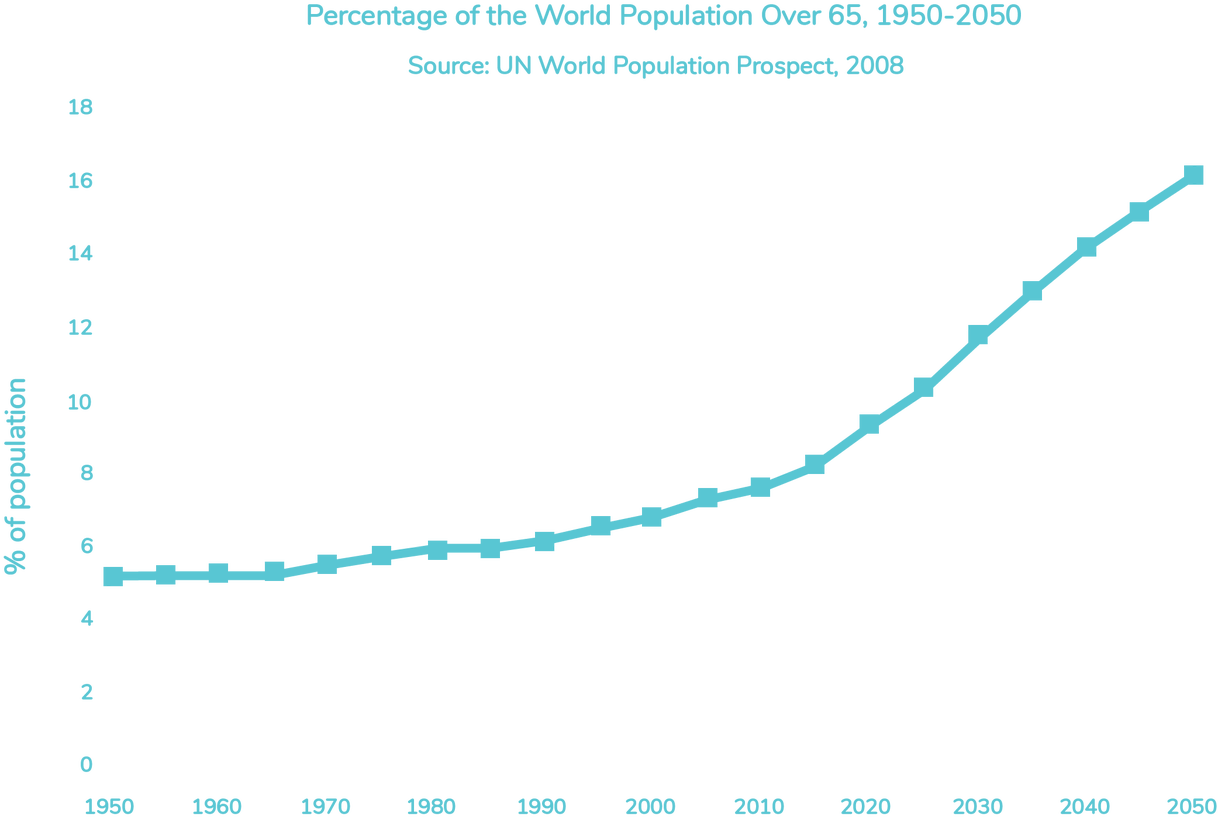Section 1 - The Ageing Process / 1.1 Article: Age Demographics
DEMOGRAPHICS
Across the world people are living longer. The science of ageing is called gerontology and when applied to oral health, this is called gerodontology. In these disciplines, adults over sixty-five years of age are often described as ‘older people’, whilst those over eighty-years of age are called the ‘oldest-old’.
“Between 2015 and 2050, the proportion of the world's population over 60 years will nearly double from 12% to 22%.”WHO 2018
The average life expectancy in the United Kingdom has increased from seventy years of age to eighty years of age in the past sixty years. In developing countries, these changes are becoming very pronounced, with increases in life expectancy happening over much shorter timeframes than before.

Figure 1: Percentage of world population over 65. Reproduced from UN world population prospect 2008.
In Wales, the average age of the population is expected to increase by 2.5 years over the next twenty years. This will lead to 30% of the population being over sixty-five years of age.
Gerontologists call this group of people over sixty-five years of age the ‘ageing population’. Ageing populations across the United Kingdom and Wales are characterised by falling birth rates and rising life expectancy.
When we study changes in population groups, we often use age-gender pyramids (fig.2). In the 1950's the shape of the graph was a true pyramid, we have seen this change to a ‘population bell’ in 2017 and now this graph is projected to look like a ‘population barrel’ by 2050. This is because of the increasing numbers of older people.

Figure 2: Age-gender pyramids for the Welsh population. Reproduced from the National Assembly for Wales. Source, mid-year population estimates, Office for National Statistics.
As many heath conditions are associated with ageing, it is important that health care systems are aligned with this changing need. In oral health, this is becoming an important public health issue and will change how services are provided in the future.